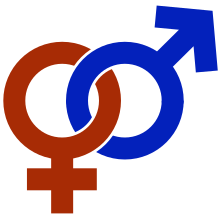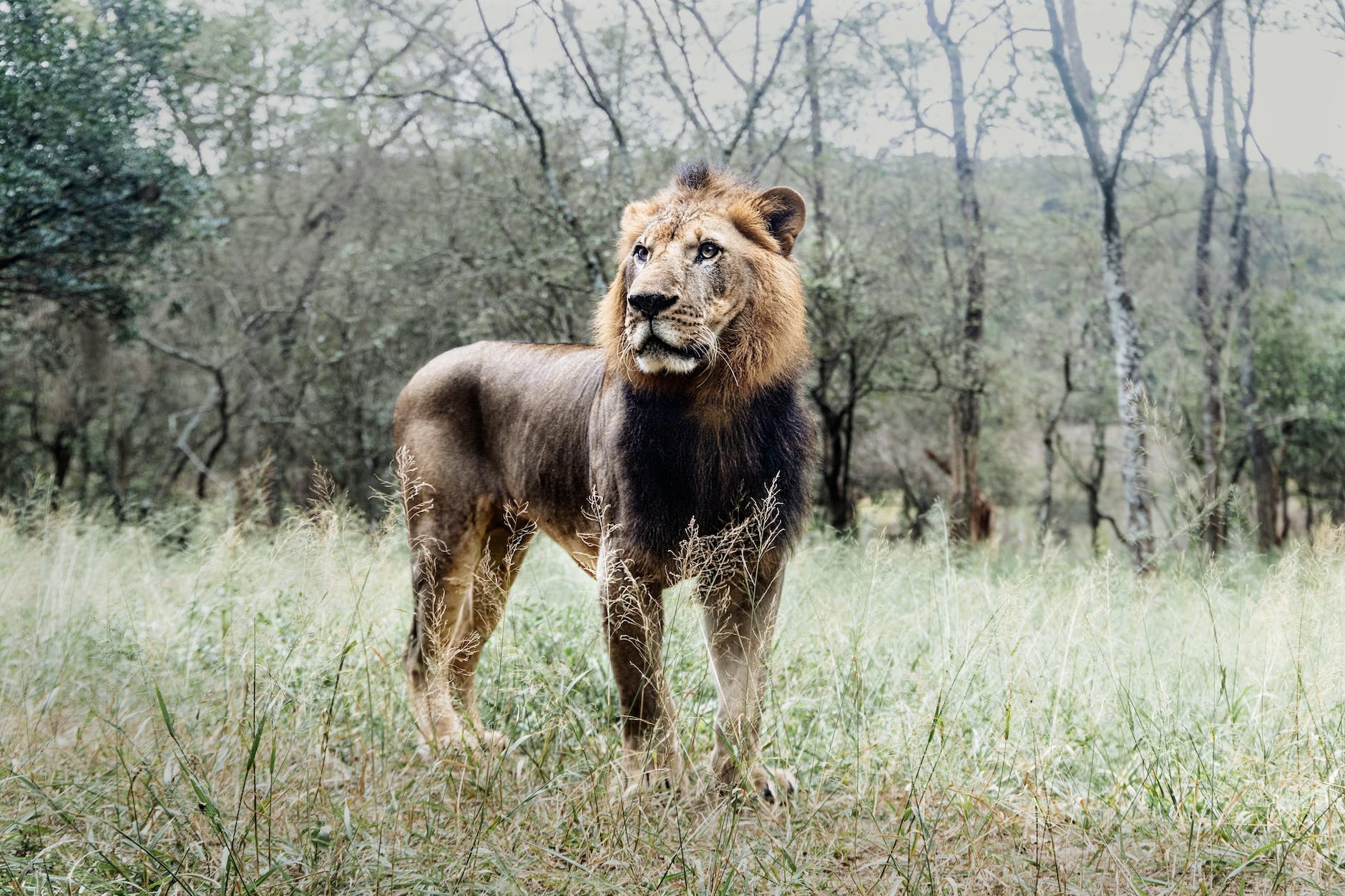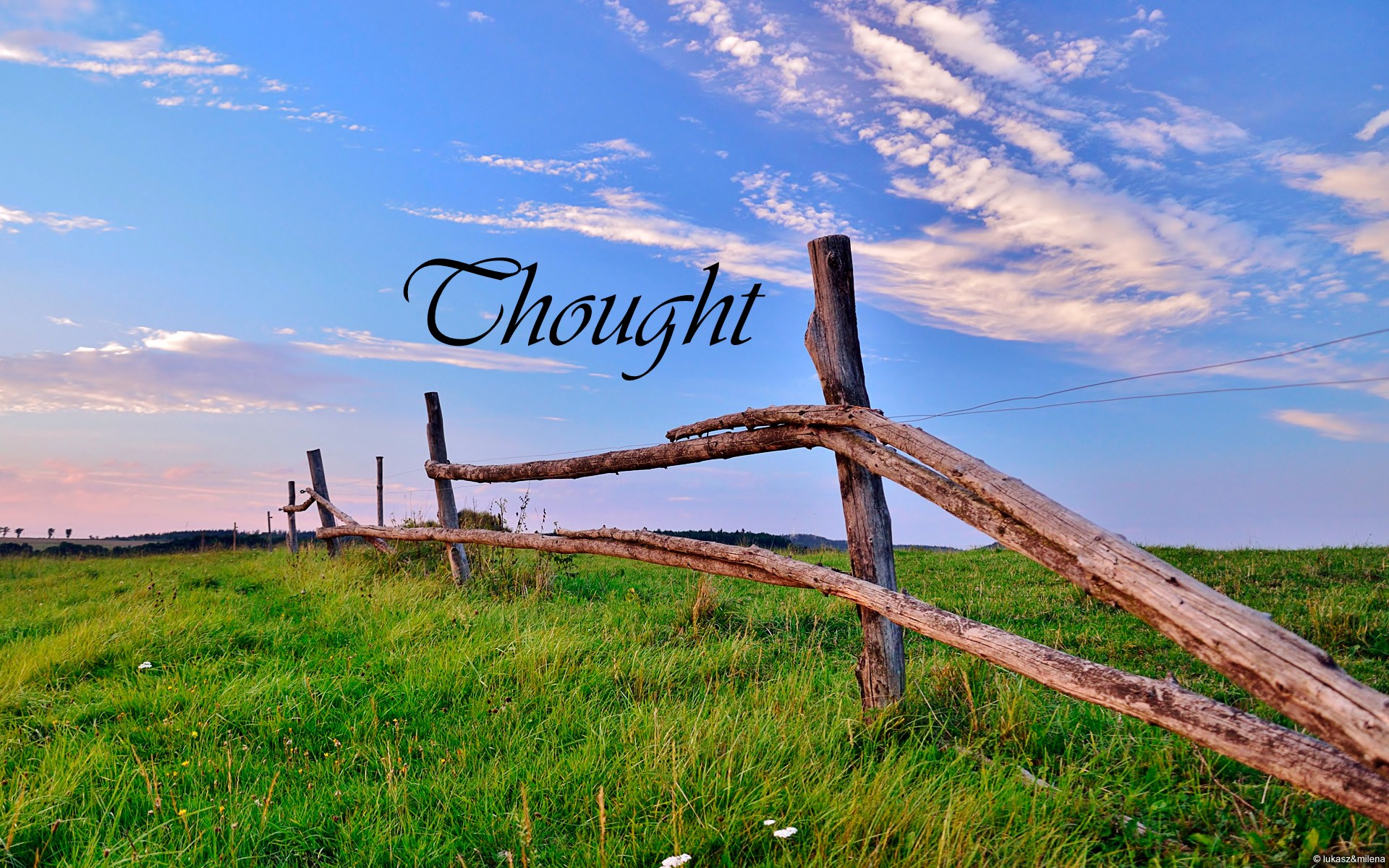Banning words
In the last five years, it sometimes becomes very difficult to know which words we can or cannot use. The banning of some words sometimes goes to the absurd.
Along one side, we are no longer allowed to talk about a negro or a black person, but we have to say a white person when talking about a white person, while we are not white at all, just as a coloured person does not always have to be an African as well as not always dark brown (although the latter should not be said either).
Nowadays, one has to watch so hard what word one uses or one can be called out as a racist, sexist or misogynist or accused of being against people who have changed their sex or are in favour of people of equal sex.
Superiority of a gender
Already in the 1970s one could easily be accused of being a chauvinist. Though one did not have to have a prejudiced belief in the superiority of one’s own gender, group, or kind, others assumed from your attitude to other people that one did. Yes, there was a time that a man treated women as a whole as being lesser in intelligence, talent, or competence in comparison to men. This still happens today; we can find men who put more value on a woman’s looks or abilities as a home-maker than as an equal member of society. But we can also find men who find other men lower than them because they have other feelings than what the majority expects from a man. Already some years, nobody thought something was wrong when seeing women walking hand in hand, but for men, this was not accepted.
Homo’s
I still remember the times when plain-clothes policemen walked everywhere at the public toilets in London to catch men making sweet nothings to other men. They were harshly arrested and detained.
As a kid going to ballet school and later also as a dancer, I and many of my colleagues had to endure mockery and were regularly called gay, ‘homo’ or ‘sissy’ on the streets in public transport. Many of us are even very fond of pretty girls and having to do ‘strong work’ a ‘sissy’ would not like or be able to do. Nothing pansy about carrying girls around the stage, throwing girls in the air and catching girls or making big jumps or playing big swords and other fights on stage.
Coloured people
Even in the time that I had a coloured girlfriend, we spoke of nigers, negro’s or black people, never looking for something bad behind it. But with the years, the community started calling certain words ‘ugly’ and ‘offensive’. Though we did not use those words as an affront or snub. At the end of the last century, it was decided we could not speak anymore of ‘Eskimo’s’, people living in an ‘igloo’ or in a ‘hut or ‘cabin’.
This century not yet running long, has brought new banned words on the list.
Words related to personality and sex
What is striking here is that people are most bothered by words related to their own personalities and people’s relationship with each other. In fact, it has now reached the point where people have started looking for neutral articles and giving recommendations to raise children using neutral terms. It is not bad that one wants to do away with the division of roles for certain sexes, but doing away of the sex, is in my eyes a step too far.
It is not at all bad to have differences in the way the sexes are treated to be removed. I myself promoted that men and women could equally do the same jobs, if they wanted and should as such also spoken about with a female or male word for that job position, though often there did not yet exist a special word for the female person being a director or doctor.
Issue of gender in childhood
In the last few years the issue of gender in childhood has become increasingly contentious
In 2016 Caroline Jordan, president of the Girls’ Schools Association, said teachers should consider using gender-neutral language, and many schools – such as the heavily criticised Highgate school in north London, which did so in June 2017 – introduced the last few years gender-neutral uniform policies. Though I doubt that nowhere one considered boys to wear skirts and as such thought to transfer girls to boys’ uniforms that this would solve the gender problem. It only indicates, in my eyes, how the focus is still on the male aspect and male superiority.
Gender-neutral or gender-free language
In 2018 the European Parliament released guidelines for a gender-neutral language and specific strategies for each of the European languages. For certain languages, like the Germanic languages, this might be trickier than others, them having the personal pronoun’s gender usually matching with the reference noun. The European Parliament recommends alternative approaches, such as feminisation and the replacement of the generic masculine with double forms for specific referents. Since most occupations are traditionally declined to the masculine, apart from typically female jobs, feminisation decreases discrimination by also using feminine correspondents of masculine terms.
In Great Britain, the chief executive of the Educate & Celebrate charity, Dr Elly Barnes told teachers that they should be moving toward a “gender-free model” in a 90-minute lecture organised by the National Education Union (NEU).

Coloured man in a non-traditional gendered occupation, as midwife with child in Oslo, Norway
She advised them to dispense with terms such as “boys”, “girls”, “son”, “father“, and “mother”, replacing them with the gender-neutral words “pupils”, “students”, “child” and “parent”. In Belgium they went a step further also to exclude the words stepmother and stepfather, them becoming a ‘plus parent’. [I wonder if they also would have a min-parent or a minus parent? 😉 ]
According to me, it becomes also very complicated when we may not speak anymore of “your mom”, “your dad”. Politicians may have decided that it’s no longer appropriate (in their mind) to call your parents “mother” or “father” because that would classify them as male or female. The same for the “brother” or “sister”, which now have to be called “sibling”. But are those mothers and fathers not male or female? Though I do agree that there are some children who have two fathers or two mothers.
Stereotyping
People may find it obvious for women to stand for their rights, but in which way are they willing to give men also equal rights?
For centuries stereotyping has been going on. It is not by just going one way, bringing the female site to the men’s place that it will be solved. Generally, one should come to terms to stop stereotyping any gender, be it male or female or even neutral, a group which is still far too much overlooked.
Stereotyping not only limits a human with a particular set of traits he or she can acquire but it also deteriorates the mental health of the person making it difficult to express one’s feelings and thoughts. Far too many people still encounter resistance when they want to go for a particular profession. They are then usually told that these are vocational skills for the opposite sex, but are not appropriate for their gender. It is not only career choices that are under threat. Much more difficult, in fact, is when people are uncomfortable with themselves and want to change their gender. On that front, one notices that we still fall a lot short of allowing own choices, even if they go against the general trend. Lots of people should think about what they want to understand under “Freedom of Expression” and what it really means.
Gender issues and Equalities Act

Gender symbols intertwined. The red (left) is the female Venus symbol. The blue (right) represents the male Mars symbol.
Back to Dr Barnes, who also told the webinar, called Getting the Language Right for 2022, that instead of gendered terms, staff should be referred to as “teacher” or “headteacher” followed by their surname. Ofsted has warned that Schools are using “overtly political materials” to teach children about gender issues.
It was said in 2021 that when it comes to teaching children about sex, sexual orientation and gender reassignment, some school staff are “confusing” their legal obligations under the Equality Act with the moral and the political, according to the school watchdog.
When the Equalities Act was introduced in 2010, it was “contentious from the outset”, according to Chris Jones, Ofsted’s director of corporate strategy, particularly in relation to characteristics relating to sex, sexual orientation and gender reassignment.
Far-right against equality
What we see in Europe is that there is an increasing political sensitivity in these areas that have made it harder for schools to handle equality well. Politicians also try to find a way out for the upcoming far-right groups which try to push the genders again in a straight jacket with specific roles for men and women. Another problem is that those far-right groups are obsessively against people with other sexual feelings than the one they find should be the normal case. From those (political) groups there are also people who are against first names which are too masculine for girls or too feminine for boys. In 2021 reports emerged of schools sanctioning the use of male names for girls as young as 13 without the consent of their parents.
Campaigners have accused teachers of misinterpreting equality regulations by allowing female pupils (who say they identify as boys) or the other way round, to use a different name. In many places, certainly in the East of Europe, such “new” names used in the classroom, and on pupil registers and official communications from the school would be against the norms or values of the Christian nation.
Wishes of the individual and LGBT issues
One popular trans school kit, published by Brighton and Hove Council with the LGBT youth charity Allsorts, says:
“Care should be taken to ensure the wishes of the individual pupil or student are taken into account with a view to supporting them during potential transition.
Stonewall has advised schools that teachers should drop the terms boys and girls in favour of “learners” and mix up the sexes in PE classes.
The LGBT charity is urging teachers to ditch all gendered language and gendered uniforms and suggests that children should compete against the opposite sex in sport.
Members of the department’s Homeland Security Group, which leads work on Britain’s counter-terrorism response, attended a talk last week focused on “the right language” around LGBT issues.
On Monday, the Home Office moved to distance itself from its contents, which it said did not represent “departmental or government guidance”.
Across 12 slides on gender issues, first reported by Guido Fawkes, Whitehall staff were told:
“Be aware a person’s sex, gender identity, and gender expression may not correspond.
“Genderqueer is a blanket term for those who don’t define their gender in binary terms … It is not a modern invention. Each identity is valid and deserves respect.”
Sexual orientation
It is not because the majority of the population identifies itself as heterosexual that we do not have to take others into account. In Britain roughly 1.5 million people or 3.2 per cent, identified with an LGB+ orientation – “gay or lesbian”, “bisexual” or “other sexual orientation”.
Across England and Wales, more than one in 100 people identified as trans or other gender identities in just 21 local authorities.
A slide on language to avoid using included the terms homosexual and homosexuality, which it said is
“generally considered a medical term now. People tend to use gay instead. Can reduce the person to purely sexual terms”.
It also warned against the use of the word transsexual. But why is one so afraid to allow things or matters called by what it is? People whose gender identity varies from that traditionally associated with their apparent biological sex at birth, themselves are not afraid to call themselves transsexuals or transgenders.
In its original and narrower sense, transgender referred to males and females who respectively gender-identify as females and males.
In a later and broader sense, it has come to designate persons whose gender identities incorporate behaviours and traits traditionally associated with the opposite sex. Transgender persons may thus include transsexuals, transgenderists (in one usage of the term, persons who gender-identify with the opposite sex but who choose not to undergo sex-reassignment surgery or hormone treatments), and androgynes (biologically or psychologically androgynous persons), among other groups. {Encyc. Britannica on Transgender}
Sex-change or medical transition
There are lots of debates going on in Great Britain about allowing children to decide to change sex.
Dr Susan Matthews, an honorary senior research fellow in creative writing at Roehampton University, analysed a series of books that are being circulated in British schools. She concluded that children were being put at risk by transgender books in primary schools that “misrepresent” medical knowledge on puberty blockers.
Her critique of children’s literature was published in the 2019 book Inventing Transgender Children and Young People.
Books and lesson plans that were designed to educate pupils about transgender issues
“fail child safeguarding and conflict with the law”,
she said.
Dr Matthews found that much of the information given about medical transition was “inaccurate”, adding that “potential harms are ignored, glossed over or falsified”.
Helen Joyce, an author and former Economist journalist, believes that men and women are being redefined by trans activists, with laws and policies
“reshaped to privilege self-identified gender identity over biological sex”.
Legal gender change
Most Dutch think an expert opinion is crucial when someone desires legal gender change, but quite a lot of people can understand that certain people would prefer to change sex. At the end of last year, there were some debates after some documentaries were shown where American kids younger than 10 years old got transformations. Two-thirds of the Dutch population say there must be a minimum age for legal gender reassignment on birth certificates. The study, carried out by the Dutch Christian patient association NPV, shows no support for the proposal among the general population. (That is reported by the NPV in a press release.)
Questioning own identity
In West Europe, we clearly see a move in the way how young girls and young boys question their own identities.
According to a study commissioned by NHS England, 10 years ago there were just under 250 referrals, most of them boys, to the Gender Identity Development Service (Gids), run by the Tavistock and Portman NHS foundation trust in London. But in 2021/22 there were already over 5,000 referrals into the Gender Identity Development Service (GIDS).
There has been a dramatic change in the case-mix of referrals from predominantly birth-registered males to predominantly birth-registered females presenting with gender incongruence in their early teen years. Additionally, a significant number of children are also presenting with neurodiversity and other mental health needs and risky behaviours which requires careful consideration and needs to be better understood.
This has led to a lack of clinical consensus and polarised opinion on what the best model of care for children and young people experiencing gender incongruence and dysphoria should be; and a lack of evidence to support families in making informed decisions about interventions that may have life-long consequences.
While some parents said they had embraced their child’s decision and welcomed the societal changes that had made this step possible, others felt confused by their child’s desire to change their body. The big question for many was how they could halt their child or how they could help their child choice to change sex. Several parents said they had been relaxed when their daughters initially began identifying as non-binary, but became uneasy when they said they wanted to take puberty blockers or cross-sex hormones and began binding their breasts. Some spoke of their anxiety and uncertainty about how to respond, particularly when their child was unhappy.
Often bigger problems arise when the parents get lesser control over the child. The uncertainty parents felt was compounded by the highly polarised debate – within the NHS, politics and the media – about how parents and professionals should respond to children who express distress about their gender.
“In the past few years it has become an explosion. Many of us feel confused by what has happened, and it’s often hard to talk about it to colleagues,”
said a London-based psychiatrist working in a child and adolescent mental health unit, who has been a consultant for the past 17 years.
Huge surge in young women wanting to become boys
Perhaps our society should question more how it comes that in the last five to 10 years we’ve seen a huge surge in young women who, at the age of around 12 or 13, want to become boys. We should wonder more about what brings those girls to change their name and press to have hormones or puberty blockers. How does it come that one group does feel inferior to an other and wants to be part of the other group?
Equality Act – Historic day for equality
On December 22 the Scottish government hailed what it called “a historic day for equality” after a vote on that Thursday afternoon in which MSPs overwhelmingly backed plans to make it easier and less intrusive for individuals to legally change their gender, and to extend the streamlined system for obtaining a gender recognition certificate (GRC) to 16- and 17-year-olds.
But immediately after the 86-39 vote, which followed three days of intense and at times emotional debate at Holyrood, the Scottish secretary, Alister Jack, said:
“We share the concerns that many people have regarding certain aspects of this bill, and in particular the safety issues for women and children.
“We will look closely at that, and also the ramifications for the 2010 Equality Act and other UK-wide legislation, in the coming weeks – up to and including a section 35 order stopping the bill going for royal assent if necessary.”
The women and equalities minister, Kemi Badenoch, who met her Scottish government counterpart, Shona Robison, to discuss the bill, said following the vote that the Scottish government had
“not addressed the full implications of their bill – especially on the lives of women and girls”.
She added:
“The UK government is now looking at provisions that can prompt reconsideration and allow MSPs to address these issues.”
A Scottish government spokesperson said:
“The bill as passed is within legislative competence, and was backed by an overwhelming majority, with support from all parties. Any attempt by the UK government to undermine the democratic will of the Scottish parliament will be vigorously contested by the Scottish government.”
Scottish versus English parliament
But the English Government is not willing to accept it. Immediately after the vote, a spokesperson for the Equality and Human Rights Commission called on the UK government to provide clarity on whether Scottish GRCs would be recognised in the rest of the UK.
The Scottish Conservatives’ equalities spokesperson, Rachael Hamilton, told Robison that her government had not brought the people of Scotland with them, and that
“in the rush to make the process a little easier for trans people, the government is making it easier for criminal men to attack women”.
I do believe trans people across Scotland today will be feeling pleased and relieved that this bill has passed, after many years of difficult public debate. Though it is not finished yet. On January the 16th, Rishi Sunak’s government has blocked legislation passed by the Scottish parliament that would make Scotland the first part of the UK to introduce a self-identification system for people who want to change gender, them being concerned the bill will have an “adverse impact” on UK-wide equalities law.
UK government blocking the legislation
Scotland’s first minister Nicola Sturgeon said there were “no grounds” for the UK government to block the legislation, claiming that it did not affect the operation of the Equality Act. For her
“This is a full-frontal attack on our democratically elected Scottish parliament and it’s ability to make its own decisions on devolved matters. @scotgov will defend the legislation and stand up for Scotland’s parliament. If this Westminster veto succeeds, it will be first of many.”
Transgenders deserving respect
Conservatives and certain Christian groups should come to terms that people their wishes should be respected and that governments can not play the boss over their bodies. The Scottish secretary said
“Transgender people who are going through the process to change their legal sex deserve our respect, support and understanding. My decision today is about the legislation’s consequences for the operation of GB-wide equalities protections and other reserved matters.
The law, first proposed by Sturgeon six years ago, was passed by the Scottish parliament by 86 votes to 39, with the overwhelming support of the SNP, Labour, the Greens and the Lib Dems in December, after years of consultation and debate.
The legislation would make it easier for transgender people to obtain official gender recognition certificates, including by reducing waiting times, removing the need for a medical diagnosis and bringing the minimum age down from 18 to 16.
The Labour leader, Keir Starmer, said on Monday that 16-year-olds should not legally be able to change gender, putting him at odds with his party in Scotland.
The shadow Scottish secretary, Ian Murray, said the issue were
“too important to be reduced to the usual constitutional fight”,
and questioned why ministers at Westminster and Holyrood did not work together on an amended bill
“to avoid this unnecessary stand-off”.
Not fiting in the general box
The whole circus in Great Britain shows how politicians are using people who do not fit in the general box are used to be a hot potato in political debates. Nancy Kelley, chief executive of Stonewall, said:
“It is a matter of grave and profound regret that the prime minister has allowed trans people’s lives to be used as a political football. This is not governing with compassion.”
Beth, a queer activist, was watching the proceedings from the public gallery in Holyrood and described it as
“an amazing day for the queer rights movement in Scotland”.
Nevertheless, she also suggested that the toxicity around the reforms had
“allowed intolerance to grow”.
Gender recognition a frontline issue
Dylan Hamilton, a climate activist, like many trans-Scots also noted the extensive delays in the bill’s progress and said
“Gender recognition has become a frontline issue because of this bill but it’s not the most important thing for most trans people. It’s just an administrative issue to make life more dignified, but much more important are the horrifically long waiting lists, hate crime and the coming conversion ‘therapy’ bill [Scotland will include transgender people in its ban on the practice, while the UK government U-turned to exclude them earlier this year].”
The present bill still lets a lot of loopholes, leaving non-binary people excluded and unrecognised.
Boris Johnson had dropped plans to ban any conversion practice last year, only for his government to perform a partial U-turn hours later after a huge backlash.
In a written statement on Tuesday, January the 17th, the culture secretary, Michelle Donelan, said:
“We recognise the strength of feeling on the issue of harmful conversion practices and remain committed to protecting people from these practices and making sure they can live their lives free from the threat of harm or abuse.”
She said it was right that the issue was tackled
“through a dedicated and tailored legislative approach”,
adding:
“The bill will protect everyone, including those targeted on the basis of their sexuality, or being transgender.”
Donelan said the draft bill, which will only ban conversion practices for over-18s
“who do not consent and who are coerced or forced to undergo”
the practice, would be scrutinised by MPs and peers to help ensure the legislation did not have “unintended consequences”.
Language to cope with Non-binary
A tthe moment it might well be that an increasing number of teenagers are identifying as non-binary, and education needs to respond to this – but the NEU does not believe that schools can or should adopt gender-neutral language across the board. We also should not try to exclude certain words because they would be too much connected by a woman or a man, or for some could sound offensive or would be a medical term. As such, there is no use to exclude homo, transgender, transsexual or other “right language” around LGBT issues, from our vocabulary use.
+
Preceding
Do the concepts of male and female need to have a formal official definition
Trans extremism, trans ideology, genderless a.o. categories and TERFs
Looking at an American nightmare
Mass Media’s Deception Causing Division
From the old box: The case for Black English
3 Things Black People Wish White People Understood
Gender, genderless, androgyny, bisexuality, cisgender and transgender
Study says highlighting gender leads to stereotypes
Added commentary to the posting A Progressive Call to Arms
Enough with the Clothes Shaming of Muslim Women
Anti-Semitic pressure driving Jews out of Europe
The Catholic synod on the family and abortion
++
Additional reading
- 19th and 20th Century Shifts in bourgeoisie
- Apartheid or Apartness #2 Up to 2nd part 20th Century
- Migrants to the West #8 Welbeing
- Happiness mapping and getting over gender mapping
- Human relations 2013
- 2014 Culture
- 2014 Human Rights
- 2014 Personalities and Obituary
- Gender equality and women’s rights in the post-2015 agenda
- 2015 Human rights
- Growing rift between observant parents and their children
- Massacre of Black people by a white supremacist is not an anomaly nor new phenomena in the United States
- Does one have to be afraid of Christian nationalism
- Apartheid South Africa and Israel’s Treatment of the Palestinians – Modern Parallels
- A new decade, To open the eyes to get a right view
- 2020 in view #1 The 45th president of the U.S.A.
- For this week at the beginning of December 2021
- Stories the Week brought to you from 2022 June 02 – June 08
- The Week 2022 July 11- July 17
- The Telegraph looking at the second week of August 2022
- New York Times view for 2022 August 29 – September 04
- Oppressive language of anti-Jehovah people does more than represent violence
- Need to Embrace People Where They Are
- To Heal the World? | Book Review
- Overprotection and making youngsters drifting away
- Intermarriage and Protecting the state of the Jewish and/or Jeshuaist family
- Belonging to or being judged by
- Time for the church to wake up and smell the coffee
- Three pillars of sustainable development, young people and their rights
- In Eastern Europe the Foundations of the European Union in danger
- Prayer on this International Day for the Elimination of Violence against Women
- Old and newer King James Versions and other translations #6 Revisions of revisions
+++
Related
- A History of African American Policemen in Omaha
- The Problem With Black People Part 1
- Can Black People Be Racists?
- Apology to the Black Race
- Black People, We’ve Been Duped!
- Reconciliation: A Black Love Song (?)
- A Wish Sandwich
- It’s a Man’s World
- The World of ‘Men’?
- Transphobia: a debate that is perhaps wisest to sit out.
- ”Gender dysphoria and being trans” – A scientific explanation
- Why is trans an issue?
- Nothing is Binary
- Gender-Flex
- Input: Google AI no longer uses gender binary tags on images of people
- Popsugar: Apple’s New Gender-Neutral Emoji Are Here to Make Your Keyboard More Inclusive
- “Awoman”?
- She/Her – They/Them – Person
- Sexists are Not Always Misogynists
- There is no gender neutral
- The dilemma of gender neutrality
- Ladies, Gentlemen and Others
- The Concept of Gender Neutrality and You
- Gender Neutrality in Rape.
- Clothes, colours and makeup are gender-neutral – a personal opinion
- Men: Masculinity or Masculinism. Do we get it right?
- Does gender neutrality have a plausible future in the Italian language?
- Guidelines for gender-sensitive language. Are the EU Parliament’s efforts enough?
- More Thoughts on Gender Neutral Language: Pete’s Husband
- We Need To Change How We’re Raising Boys
- Are School Curriculums Promoting Gender Stereotypes?
- Role of parents in teaching gender-neutrality
- The importance of inclusive language
- Parents, do your homework
- Need for Gender-Neutral Rape Laws: Unheard Voice of the Male Victims
- N.B. vintage clothing shop embraces gender neutrality and body positivity
- Need of Gender Neutral Domestic Violence Laws
- Practicing What You Preach
- Horse by Chase Twichell
- Classic kids toy Mr. Potato Head gets new, gender-neutral name
- How To Decorate The Perfect Gender Neutral Nursery
- Up In Space
- Life on this gender neutral planet
- Full of It
- How can one discover ideas of gender through Zenne Dance?
- Women are being Encouraged to Challenge Sexism in the West Mercia Police Force
- Feminism in India is dying
- On bisexuality
- Street harassment, and silence
- Boys and dolls
- Have real respect
























































Gallery covering human biology, including a cabinet that deals with genetics, is under review as ‘cultural trends influence science’
The Science Museum has dismantled a trans-inclusive display following complaints it was pushing “propaganda” and not biology.
A cabinet titled Boy Or Girl? displayed quotes describing the transition from the “wrong body” as a “hero’s journey”, and labels characterising gender as something “difficult to define” which “may not match your biological sex”.
A display on sex characteristics titled Boy or Girl? has received complaints “due to the lack of mention of transgender”, according to internal documents, and there are plans to make alterations to the exhibit which asks “how are boys and girls different?”
The display which featured a fake penis and chest-binding equipment has been taken down by the museum following complaints the information provided was “not science, but propaganda”.
Complaints were lodged by Baroness Nicholson of Winterbourne, who wrote to the museum’s chairman Sir Ian Blatchford to argue that the display “promotes social and medical transition in a way that is not neutral”.
The controversial Boy Or Girl? cabinet stands in the Who Am I? gallery, which covers various aspects of biological identity from genetics to facial expressions.
Internal documents state that there was “action to consult the Museum of Transology” – which bills itself as the largest collection of transgender’s people’s artefacts – in relation to the Boy or Girl? exhibit.
The display highlighted for its lack of transgender coverage, and earmarked for alterations, already makes mention of topical issues relating to gender, including feelings of being “born in the wrong body” and how these are addressed.
Plans to make changes to the display following complaints about a limited mention for transgender issues, as noted in internal emails, has been criticised by campaigners.
What is your opinion about the use of certain words?
+
The equalities minister is to write to all Tory MPs and insist that a ban on trans conversion therapy must not criminalise parents, as a backlash against the plans grew. In a highly unusual move, it is understood that Kemi Badenoch intends to set out her concerns over the proposed legislation, which was announced yesterday in the Commons. She will write that legitimate conversations between parents and trans children must not be outlawed and that freedom of religion must be protected. Her letter reflects concern in Downing Street that Tory MPs will rebel over the introduction of the ban, which was announced as the Government vetoed separate plans to make it easier to change gender in Scotland – on the day rifts were exposed in the Labour party.
After Rishi Sunak blocked Nicola Sturgeon’s gender reforms, do you agree with the Prime Minister – and why?
LikeLike
Michelle Donelan, the Culture Secretary said:
LikeLike
Alan Cochrane said:
LikeLike
Pingback: The Telegraph Frontpage for Wednesday 2023 January 18 – Some View on the World
Pingback: The dilemma of gender neutrality | From guestwriters
Pingback: Governments, media and people clashing over gender issues – Some View on the World
Pingback: From Chris Evans, the editor of the Telegraph 23 January 2023 – Some View on the World
Pingback: Archbishop of Canterbury threatened over gay marriage by MPs – Some View on the World